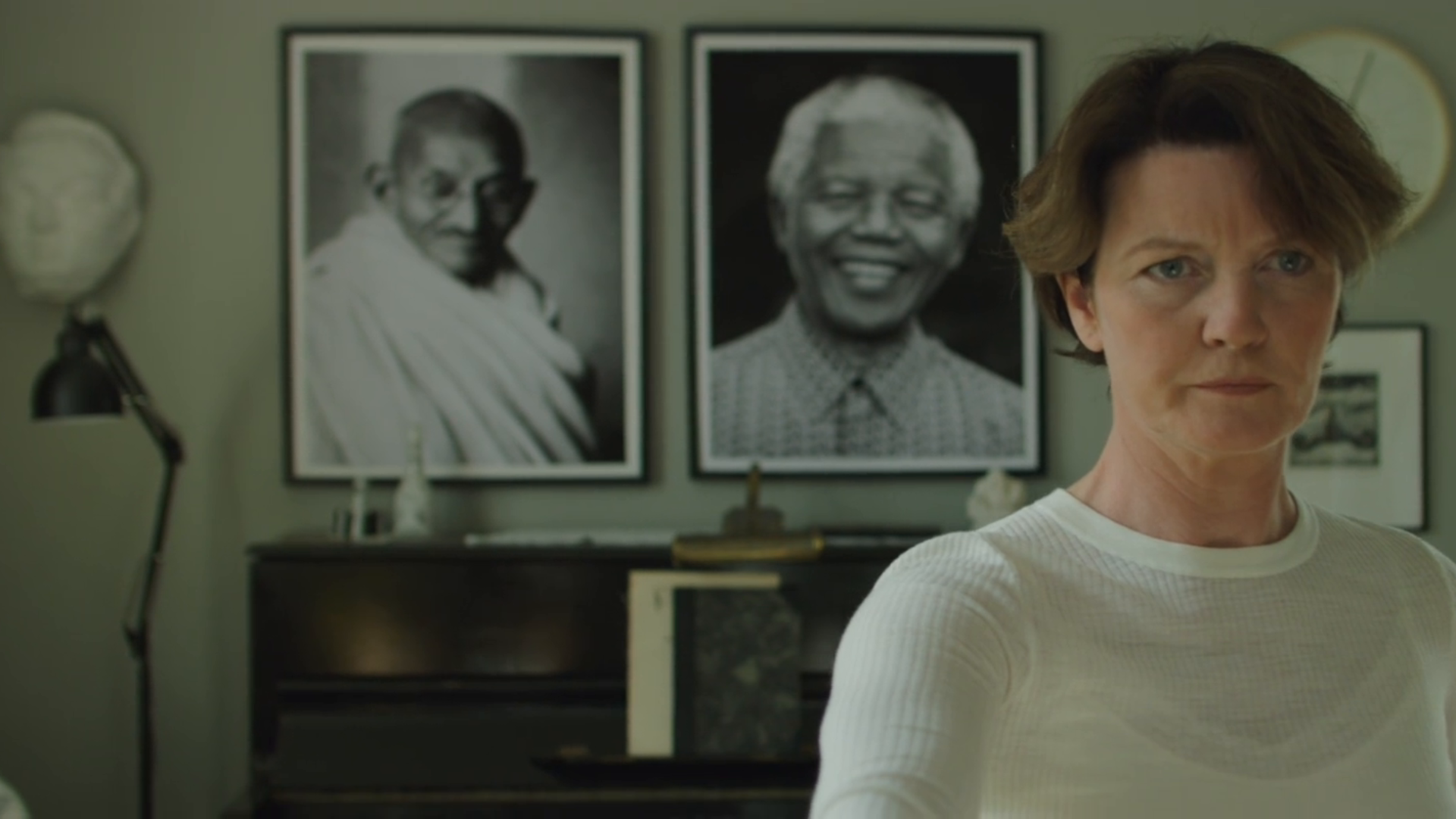Film Review: Woman at War
Premiering at the 2018 Cannes Film Festival, Benedikt Erlingsson’s Woman at War received critical acclaim for capturing a comedic, yet poignant, take on environmental activism at the heart of the Icelandic wilderness.
Source: BETA Cinema, Woman at War
The film centres on Halla, an eco-warrior who challenges a Rio Tinto aluminium plant by cutting the power supply and damaging surrounding electricity pylons in an effort to save her Icelandic homeland from environmental degradation. Erlingsson has described Woman at War as ‘a heroic tale set in our world of imminent threat’ (Kermode 2019). The metaphoric ‘monster’ or ‘imminent threat’ that Erlingsson speaks of here, is climate change; enforced by Capitalist conglomerates who continue to ignore the environmental consequences that their billion-dollar industries produce for profit.
The film opens on a pair of gloved hands preparing to shoot a silver arrow into the sky. The beholder? An ordinary middle-aged woman wearing a knitted sweater and hosting a stern face – hinting to a more contemporary vision of the Greek goddess, Artemis. This is Halla, the protagonist, who aims to take down the monolithic powerlines with a bow and arrow and a set of MacGyveresque tools. It is clear that Halla is going against the status quo. That is, to take down more power lines in the coming weeks as a form of environmental retaliation.
It isn’t until the end of Act One that Halla’s quest for environmental activism shifts. Halla receives a phone call from an adoption agency informing her that her application has finally been approved after four years. Nika, a girl in Ukraine is awaiting a mother. This inciting incident sparks the thematic question of the film: Will Halla abandon her goal of disrupting the Rio Tinto aluminum plant to care for the child she had always wanted?
The universe has bestowed Halla with a cruel ultimatum: she must choose between caring for a child or saving the Icelandic environment where she was raised. And as we have been taught, a woman cannot do both…
Halldora Geirhardsdottir as the Mountain Woman ‘Halla’
Despite keeping her emotional turmoil rather clandestine, we slowly see her goals moving further and further out of reach. If she must bring down more power lines, she must act quickly, whilst she is a single woman, not a mother, for when the child arrives, Halla’s quest to save mother nature must stop – for a human child needs protection too, if not more than the earth where they reside.
Unfortunately, one more attempt to take down power lines leads to a mistake – a drop of her blood left at the crime scene. Halla’s chance to fly to Ukraine is over; hopes of adoption are over; everything she had hoped for is out of her control. Whilst Halla stays in prison, in a strange twist and rather unpredictable turn of events that is outrageously thrilling, her sister, Asa, whilst visiting Halla in prison, switches places with her during a power outage, thus allowing Halla the chance to travel to Ukraine and bring Nika home. The final shot, Halla carries Nika out of a stopped bus as they walk through rising flood waters.
A more feminist reading of Woman at War could say that the ending is a disappointing cliche with the woman sacrificing her goals for maternal biological instincts; however, it’s hard to ignore the underlying message that we as humans continue to grow and live on despite the impending doom of climate change.
Woman at War sheds light on Halla’s search for motherhood and her plan to fight against the conglomerate powers of Rio Tinto, but as tragic as it sounds, Erlingsson continues to hint at humankind’s collective ignorance towards preventing environmental devastation. Throughout the film, he makes a conscious effort to juxtapose scenes with shots that capture this collective ignorance. As Halla tries to hide from authorities, sneaking past people’s homes, the camera pans across windows we see families in the windows of such homes, going about their evenings nonchalantly, ignoring the news playing on their televisions where journalists report on global floodings, loggings and worldwide deforestation.
Woman at War works so well as an analogy for the current climate crisis because it is genuine to itself and to the activists trying to help. There are no supernatural elements of ghostly apparitions like in Aronofsky’s Mother! (2017), nor is it an overbearing epic like The Day After Tomorrow (2004), or as grim as The Road (2009), rather Woman at War mixes both pathos and comedy so subtly that it replicates an authenticity, showcasing people’s real ambivalence towards climate change and the human condition to always seek out the good in the most dire situations.


